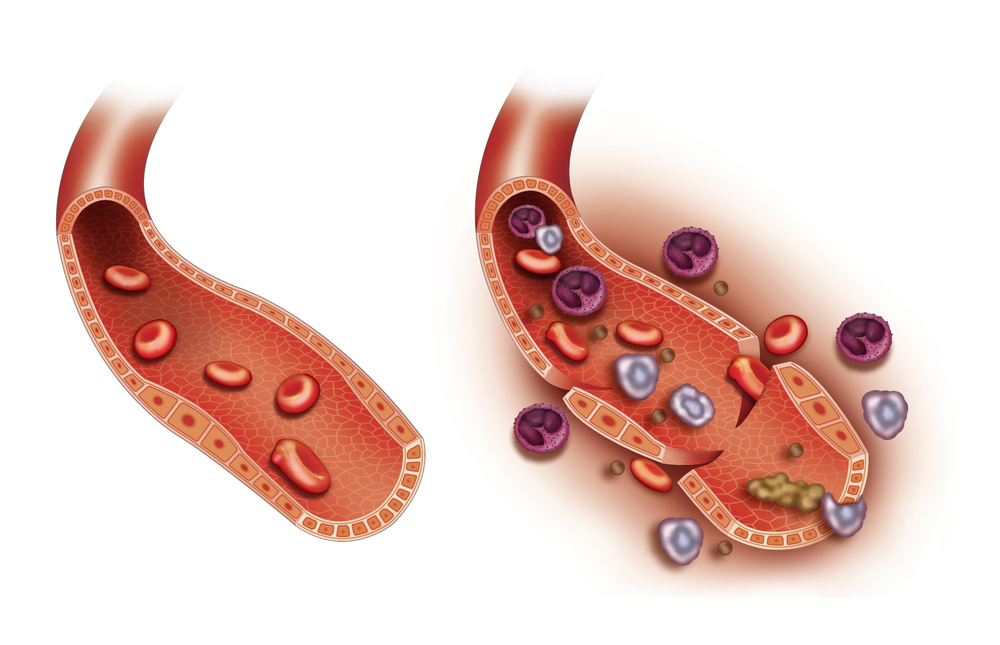What is an autoimmune disease?
What have joint conditions like rheumatoid arthritis, Bechterew’s disease, Sjögren’s syndrome, lupus erythematosus (LE) and psoriatic arthritis in common? In all cases, it is an autoimmune disease. In this group of conditions you are basically your own pathogen. Your body is attacking itself. By the way, with the very best intentions. Only the immune system sees healthy and well-functioning cells as harmful to your health. The chronic joint disorder actually occurs because your body is trying to protect you but then not in the right way.
What is the immune system?
This smart defense system consists of specialized cells and proteins that are present throughout your body. The most important tasks are the clearing of infections and the removal of cell remains that have become redundant. The immune system is programmed to recognize and subsequently fight pathogenic bacteria, abnormal cells and viruses. It then makes an antidote against these harmful intruders.
Usually you will notice when the immune system is activated against infectious pathogens. There are inflammatory symptoms such as fever, redness, pain and swelling.
In addition, the immune system is able to see the difference between still well-functioning cells and the components of old, infected or depleted cells. Removing these superfluous cell remnants and abnormal cells is a continuous process, especially when you sleep at night, when activity is high.

The left blood vessel is normal and contains a normal blood cell composition (especially red blood cells). In the right blood vessel there is an intruder present to which the immune system responds: there are various immune system cells that attack the intruder. Also, the blood vessel allows cells to ‘escape’ so that the intruder can also be attacked outside the blood vessel. There is redness (because of the red blood cells that escape) and sometimes a swelling (due to the amount of fluid that spills from the blood vessel). In case of autoimmune disease, this happens too – but without a reason!
How does an autoimmune disease develop?
This happens when the immune system suddenly cannot detect the difference between well-functioning and old or different cells. Then it is going to turn against the own body. Healthy cells are suddenly considered dangerous objects. The white blood cells of the immune system then produce antibodies against the healthy cells of the body. These autoantibodies subsequently attack the well-functioning cells of your body. As a result, organs and tissues can be damaged.
However, it is also called an autoimmune disease when the removal of redundant cell debris is correct, but is accompanied by inflammatory symptoms.
In rheumatology, the rheumatoid factor (RF) and ACPA are the best known autoantibodies. When these are found in your blood, you are likely to have an autoimmune disease.
Finding the exact cause of autoimmune diseases has been a focal point in many scientific studies for decades. However, how these conditions arise is another great mystery. However, it is established that a genetic component must play a role. But not every carrier of that genetic component develops autoimmune disease.
How can an autoimmune disease be recognized?
Currently, more than 80 diseases have been identified as autoimmune disease. The symptoms vary greatly from disease to disease. For example, someone with rheumatoid arthritis can suffer from pain and stiffness in the joints. Patients with Sjögren’s syndrome may suffer from dry eyes and dry mouth. In most cases, chronic inflammation of the organs or joints plays a role in autoimmune disease. Symptoms such as fatigue, depression, pain and an overall miserable feeling are associated with this type of disease.
How is an autoimmune disease treated?
Many autoimmune diseases can cause damage to organs. Think of skin, heart, lungs, nerves, liver and kidneys. You will be treated by a physician specializing in the organ affected by the disease. So you come to a rheumatologist for joint diseases, and a dermatologist treats the autoimmune diseases involving the skin. It is not always directly clear that the complaints are caused by autoimmune disease. You will then be initially examined by an internist or an internist immunologist.
Is autoimmune disease the same as an allergy?
No, an allergy is immunologically an entirely different story than an autoimmune disease. The main difference between an autoimmune disease and an allergy is that there is an “invader” in case of an allergy and in the case of an autoimmune disease there is not. However, in an allergy, the immune system makes the mistake of treating a harmless intruder as a dangerous intruder which needs to be removed. In an autoimmune disease, the immune system makes mistakes that body-like substances are treated as dangerous substances that need to be removed.

Share this page
Tweet

Download for free the booklet ‘Moving without pain’ with a retail value of $6.75 / £4.95.
Any questions? Please feel free to contact us. Contact us.





